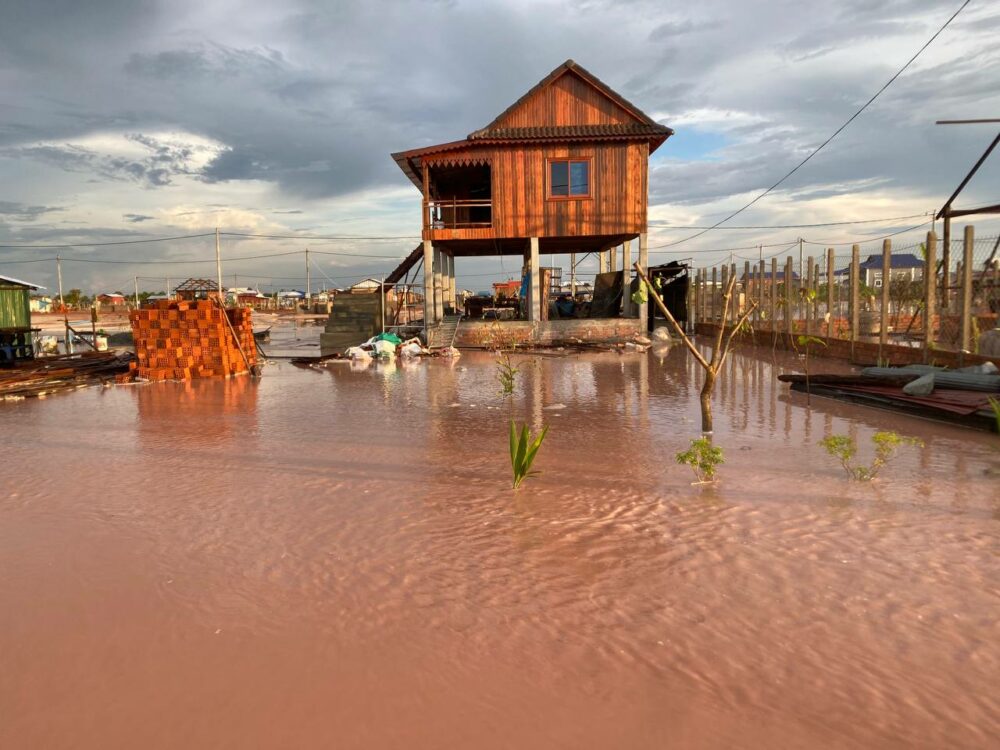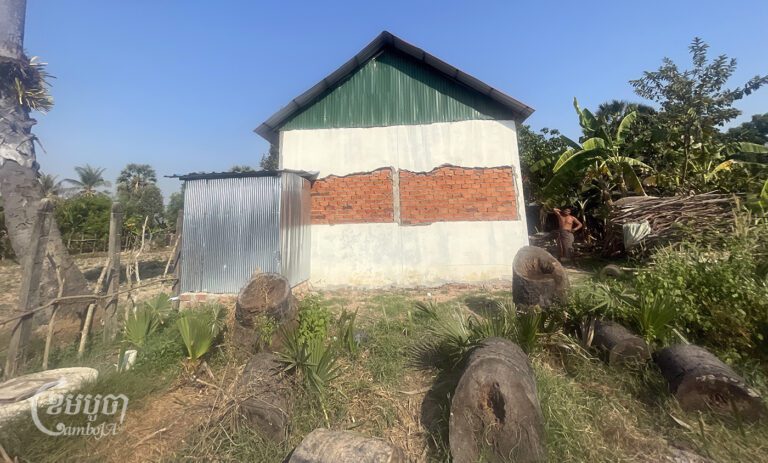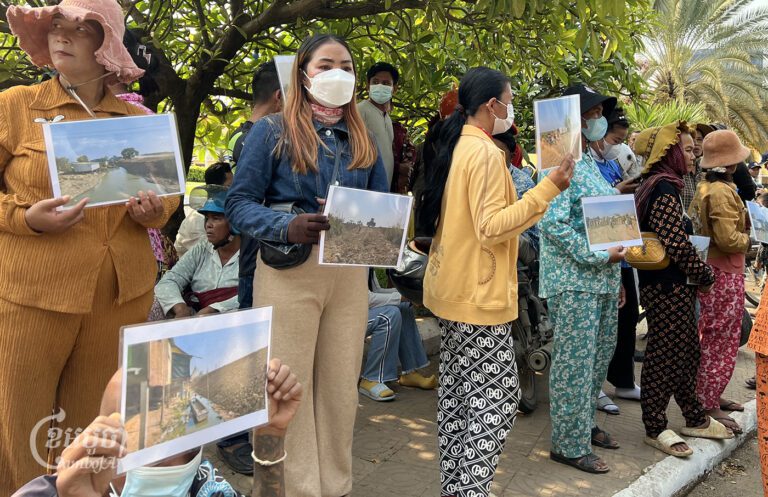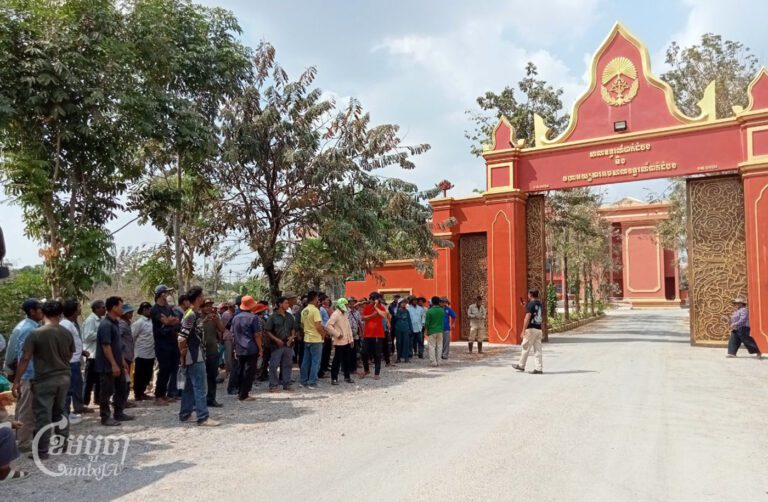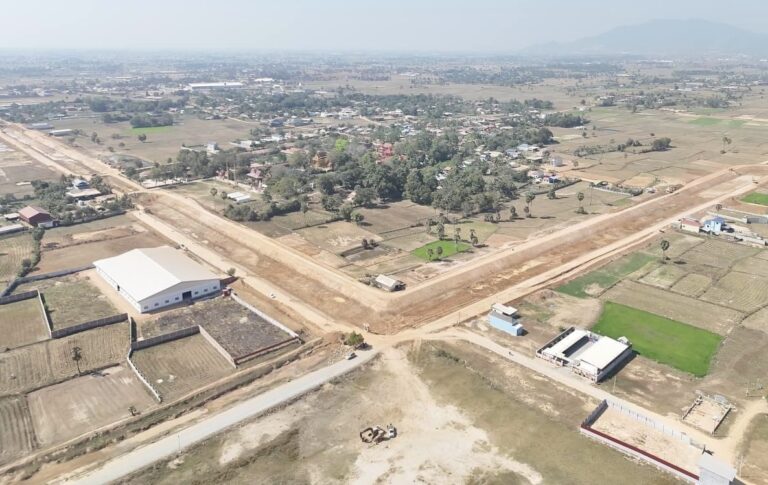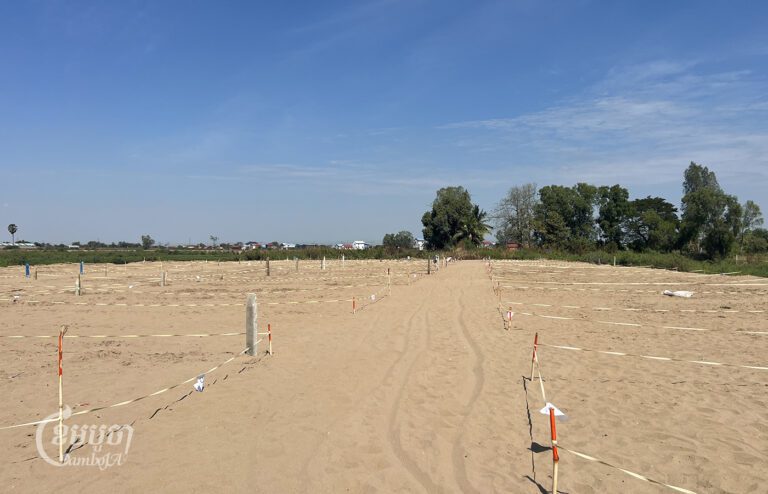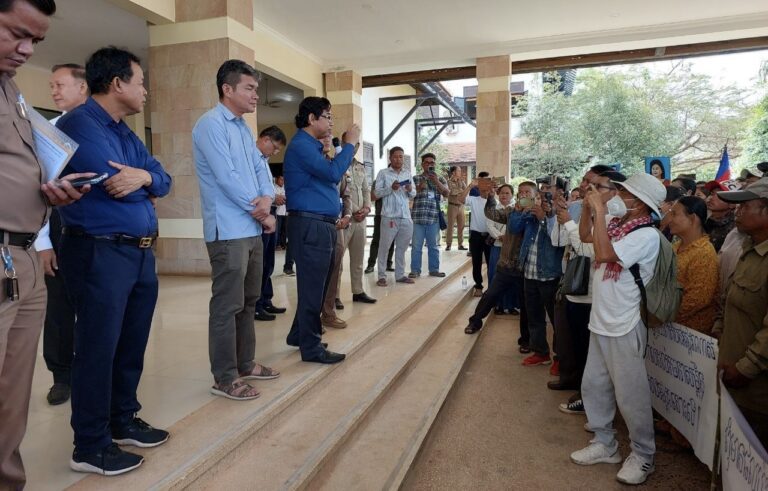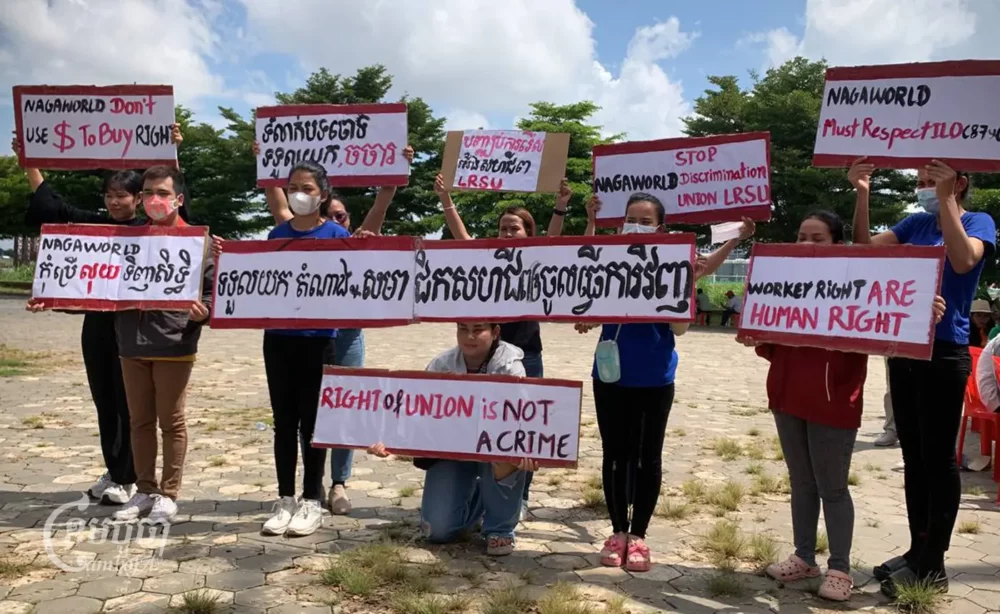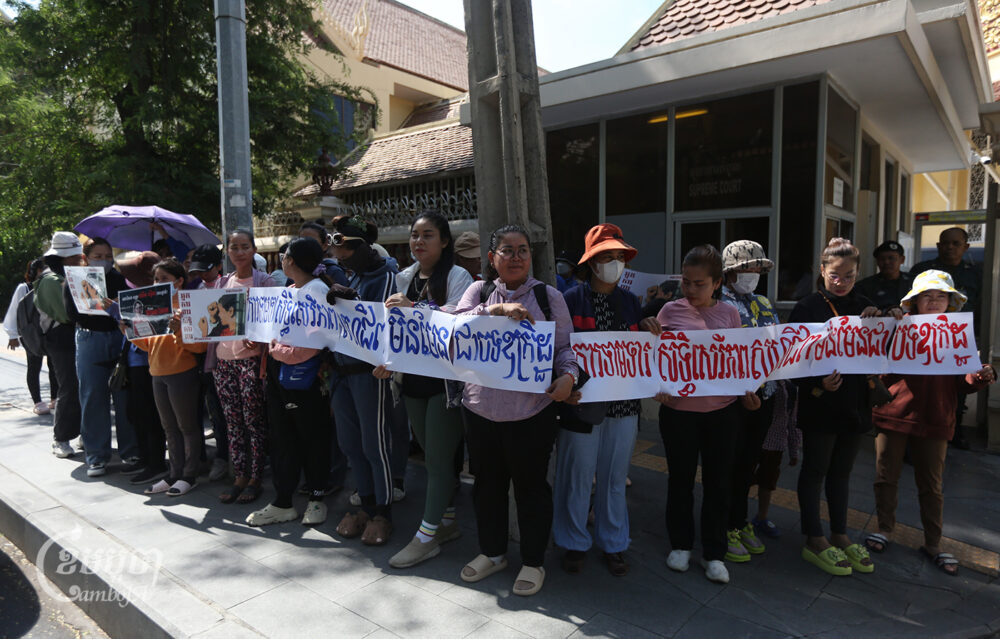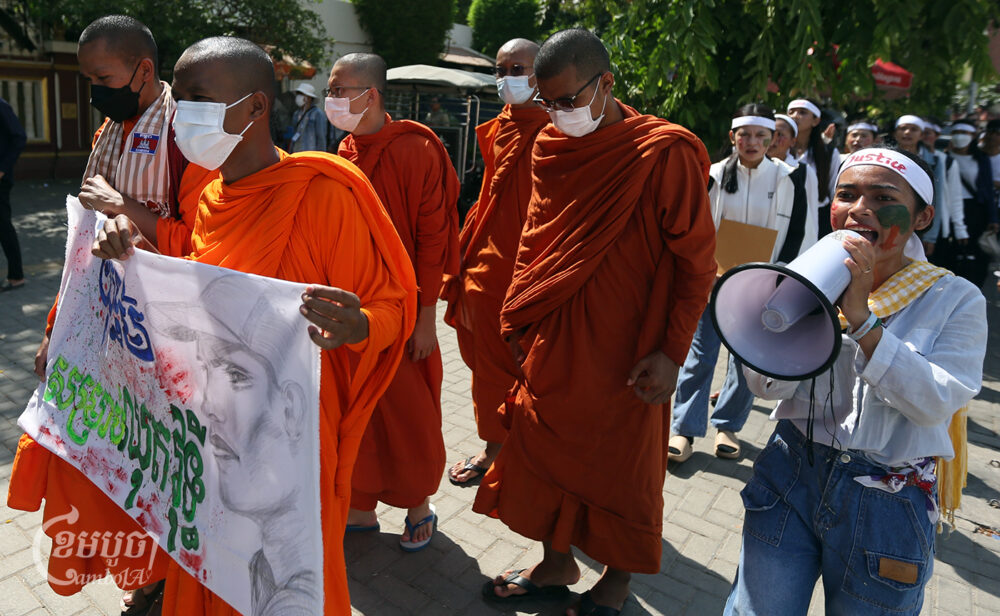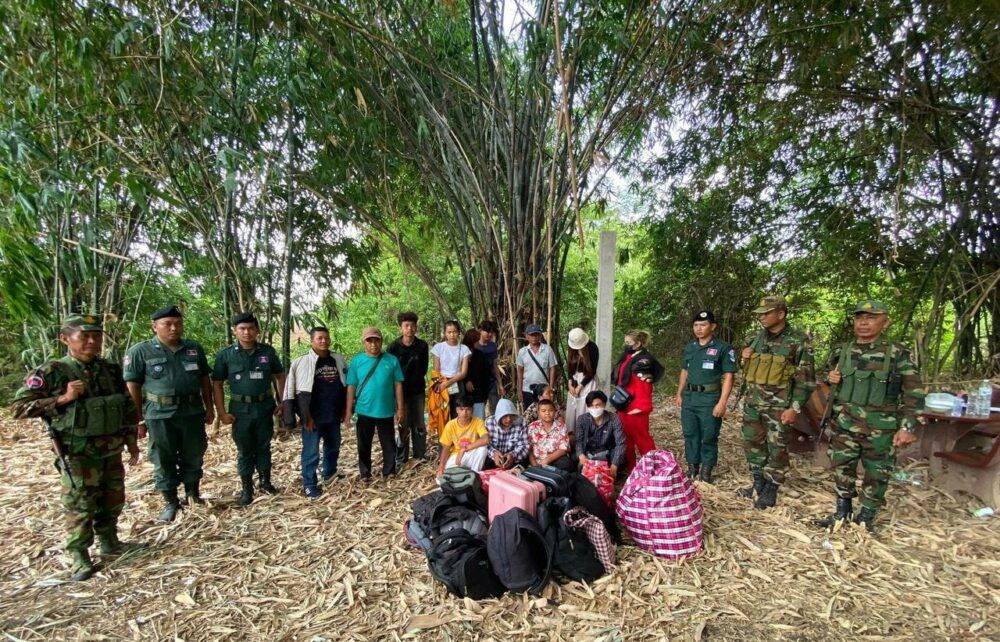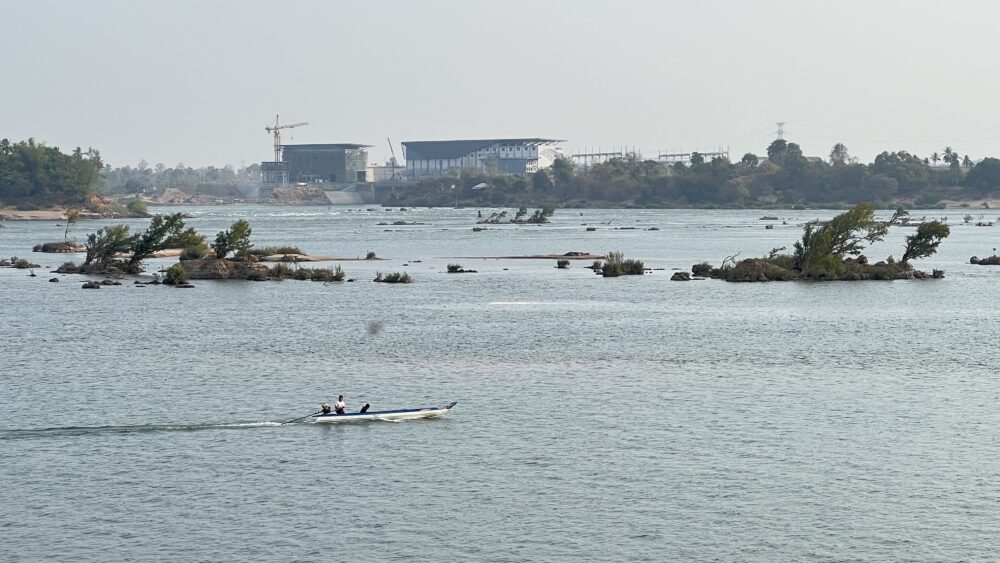Families in Run Ta Ek, many of whom relocated from Angkor after reported forced evictions, continue to deal with flooding despite repeated complaints to authorities.
“Every time it rains, the water comes up to our knees. It sinks into the house. It makes me worried about the safety of the children,” said Run Ta Ek resident Chan Kea. “I want to ask [the authorities] to refill the soil. I do not have money so maybe it will stay like this forever.”
Kea said he moved from Angkor to Run Ta Ek because he had no better option. The area has a low topography and even though the drainage system is being worked on, he said, it is only 30% to 40% complete and when it rains there is always flooding.
He cannot afford repairs or to refill the soil near his house in part because he has not been able to earn enough money in Run Ta Ek, which is further away from the city center than his Angkor home.
“I do not know what to do here [for work]. There are only sellers, no buyers, no income, no jobs, only sellers. Everyone is in debt,” Kea said.
Kea and his family are among about 2,000 families who have moved since November last year from the Angkor Wat Conservation Area to a new location more than 30 kilometers away in Run Ta Ek commune, Banteay Srei district. These families have faced displacement as part of ongoing government efforts to relocate people living in sites that officials claim are environmentally damaging and could jeopardize Angkor Wat’s World Heritage status.
Cambodian authorities have repeatedly claimed that these relocations are voluntary, while a CamboJA investigation found that evictions were forced. A government report on Angkor conservation sent to the United Nations Educational, Scientific and Cultural Organization (UNESCO) World Heritage Center in December 2022 characterized the resettlement areas as “equipped” and able to receive families in “decent and safe conditions.”
Teang Sreypov, 30, said she had no choice but to move to Run Ta Ek with her family. Her house in the development is currently being built, and flooding due to the unfinished drainage system has disrupted construction.
“These days it rains all the time,” she said. “It affects me because the land of my house is low. When it rains, no [authorities] come to [check on residents] in my area.”
Sreypov said she has requested the authorities responsible for the development to expedite infrastructure construction, including the storm drainage system, and to refill the soil in the area.
Another resident, Thuok Srey Key, who lives with her seven family members, said that as long as the drainage system is not ready, it will flood her house when it rains.
“I think if they built storm drains, it would not flood,” she said.
Key wants the authorities to address residents’ concerns as soon as possible on issues such as “roads, clean water and toilets.” She added that the authorities want people to build houses in the area in large numbers, while some people can not yet afford to build them.
Rin Lot, the newly-appointed Banteay Srei district governor, said the flood water was “gradually receding” and authorities are using excavators to temporarily release water. He did not know how much of the drainage system had already been built when asked by CamboJA.
“There are challenges because this season is the rainy season. The infrastructure is under construction and not finished, especially the roads and the water system. The people have some difficulties when it rains,” Lot said.
The authorities have built infrastructure to provide clean water and electricity to residents, he said, but not all residents can access it yet.
Apsara National Authority spokesperson Long Kosal said authorities have built infrastructure including roads and a clean water system to make residents comfortable, and an additional 2,000 families plan to move to the area.
“They are happy living in this place. Even though they are facing some problems, they are happy about the relocation,” he said. “Our policies make sure they are living in good conditions. We never leave them alone. We always take care of them and do everything for them.”
There are always issues with new developments, he said, but the flooding in Run Ta Ek has not caused a big problem for residents and the engineers are solving the issue.
Hy Say, director of Siem Reap provincial Department of Land Management, Urban Planning and Construction, said his department is not involved directly in the relocation of Run Ta Ek, and only facilitates between other government agencies involved in the project.
“The engineers are working hard and normally there are always gaps” in newly developed infrastructure, he said.
Ly Vannak, administrative director of Siem Reap Provincial Hall, told CamboJA that the people in the Run Ta Ek area are no longer under the jurisdiction of Siem Reap.
“The government has cut that area for Apsara’s authority, so it does not belong to the provincial authority. We only facilitate between people and other authorities,” Vannak said.
Soeung Saran, executive director of the NGO Sahmakum Teang Tnaut, said that the government should be well prepared with the infrastructure to make sure people that are relocated live in a good environment.
“Based on the policies of the UN or ADB [Asian Development Bank], before relocating people from one place to another place, [the government should] make sure the new place has infrastructure so that people can access the market or school,” Saran said.
UNESCO did not respond immediately when CamboJA sent a request for comment on Thursday.
Update: This story was updated at 5:56 p.m. ICT to correct a translation of a quote.


